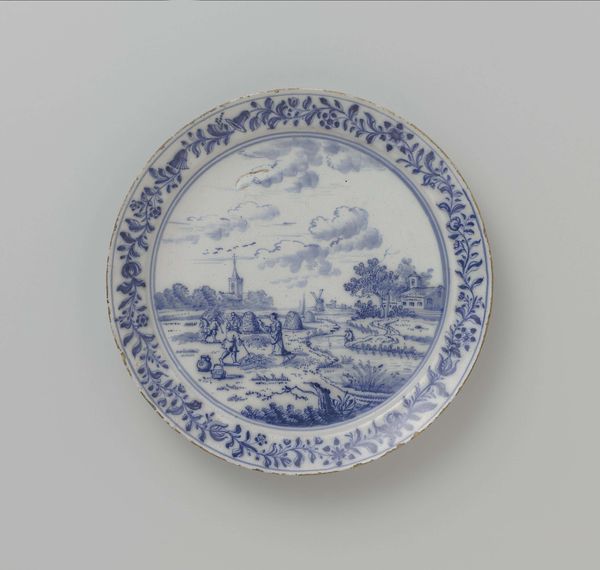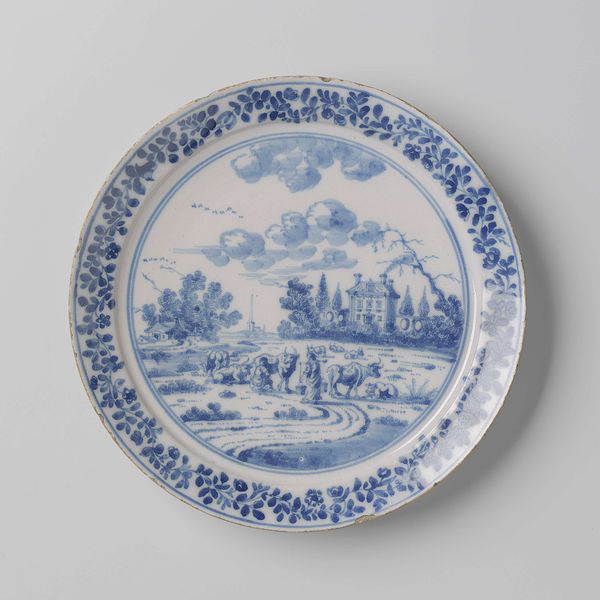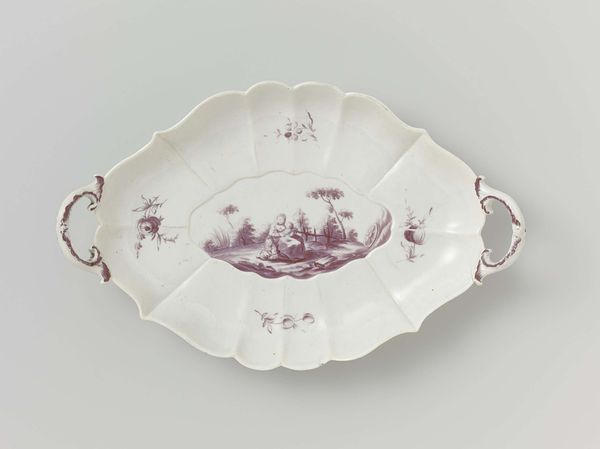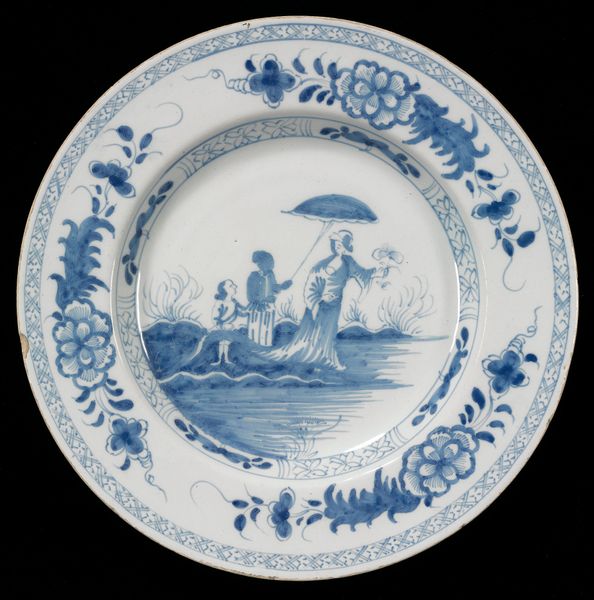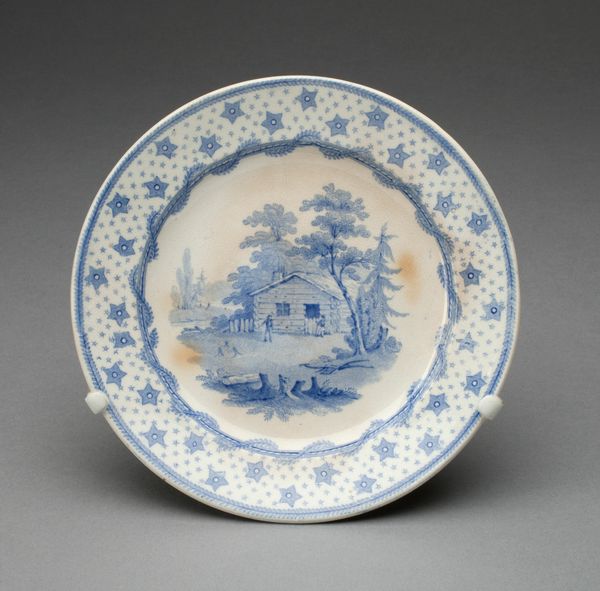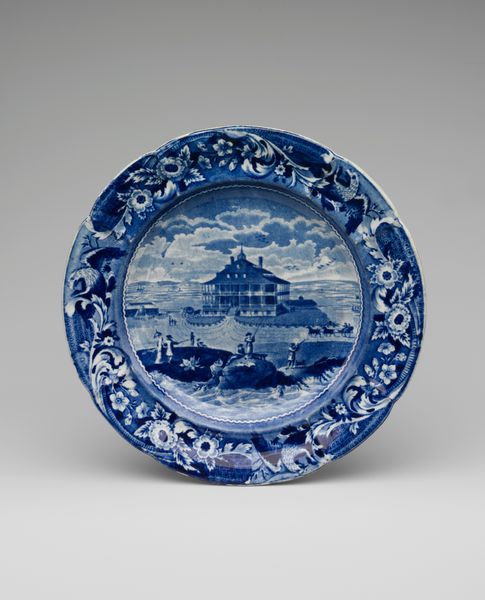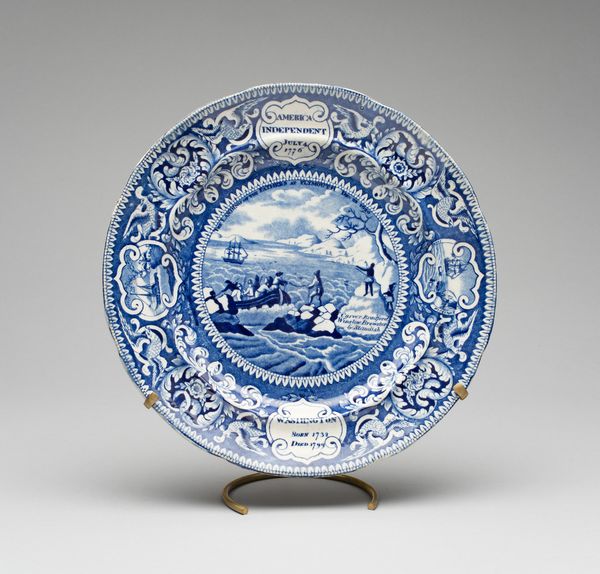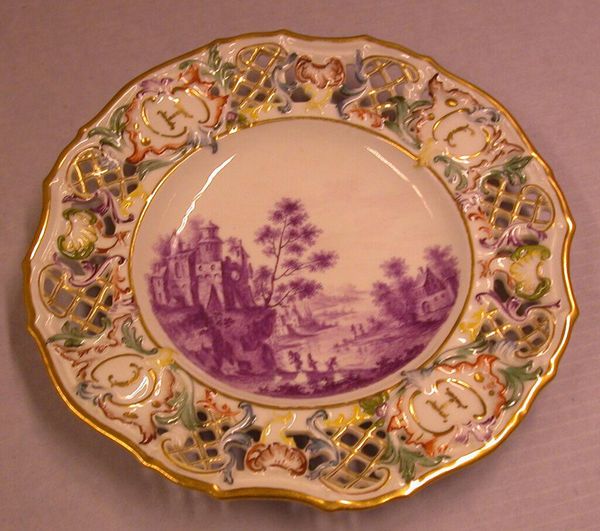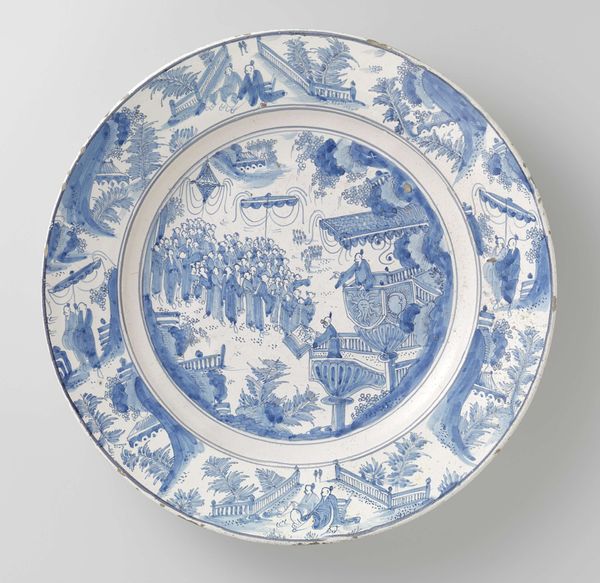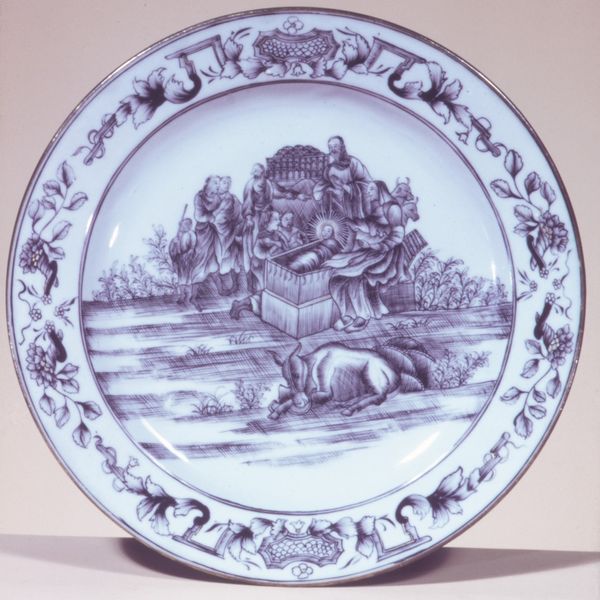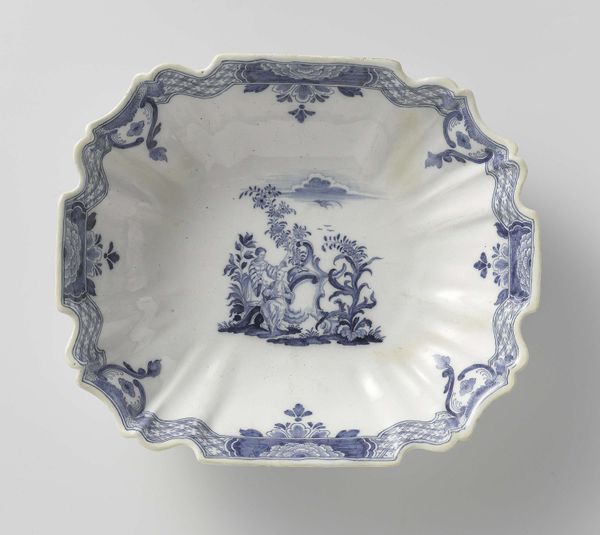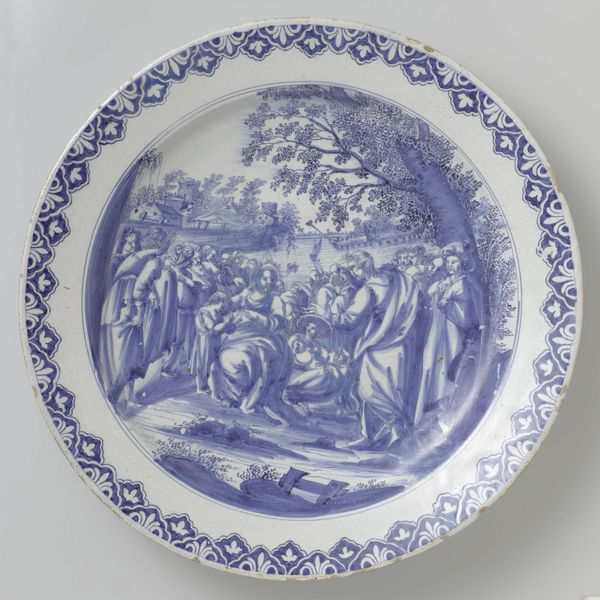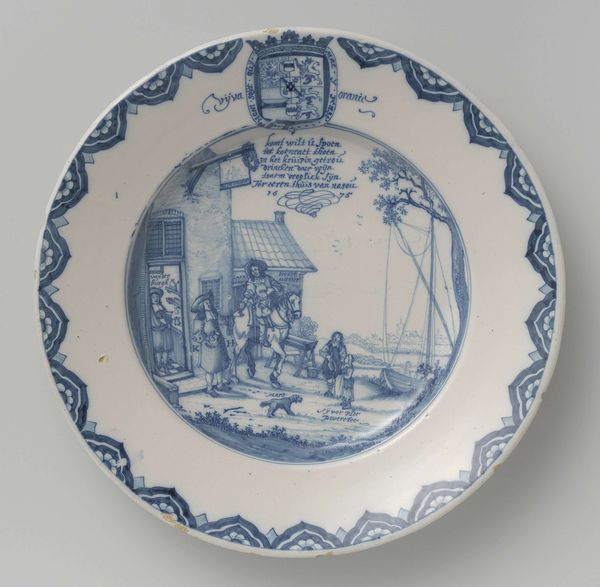
Copyright: Rijks Museum: Open Domain
This is a Loosdrecht saucer, part of a coffee and tea service, made of porcelain. The pale surface is decorated with a landscape scene in delicate purple pigment, edged with gold. Porcelain, often called "white gold," has always been a prized material. Its creation is a demanding process, requiring precise temperatures and skilled labor. Making this saucer started with mixing and firing the clay, then carefully painting the scene before a final firing to set the design. The gold rim was applied last, adding another layer of luxury. The decoration, showing a tranquil waterside view, reflects the era’s taste for picturesque, idealized nature. But the plate itself tells another story, about global trade and industry. The European desire for tea and coffee fueled the growth of the porcelain industry and plantations, both of which relied on the exploitation of workers and resources. So, this little saucer encapsulates complex histories of labor, trade, and artistic skill, all fired into one elegant object.
